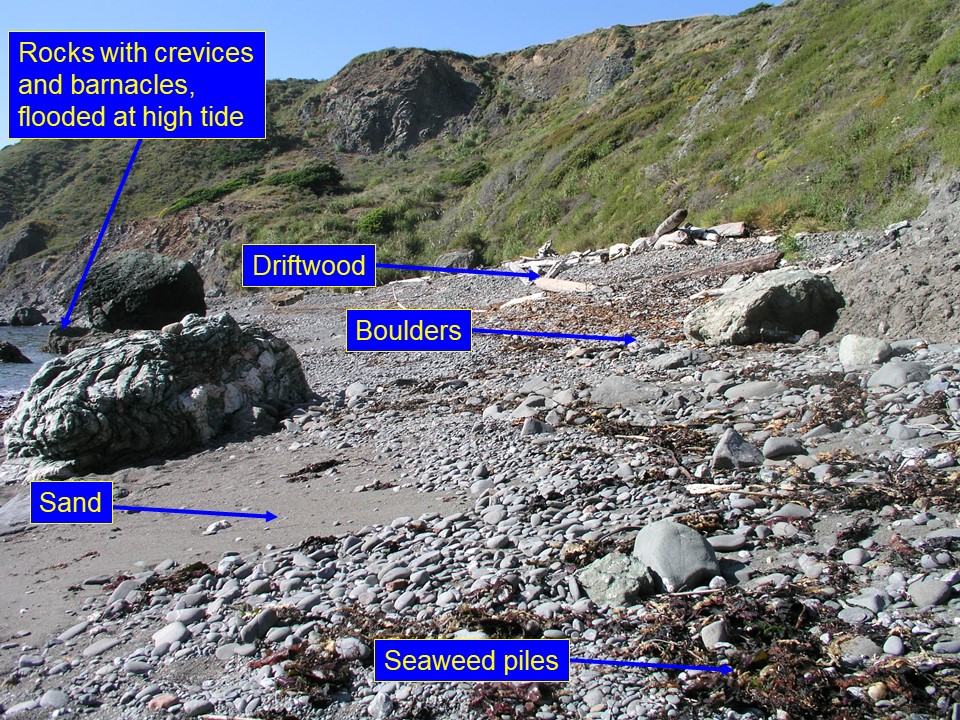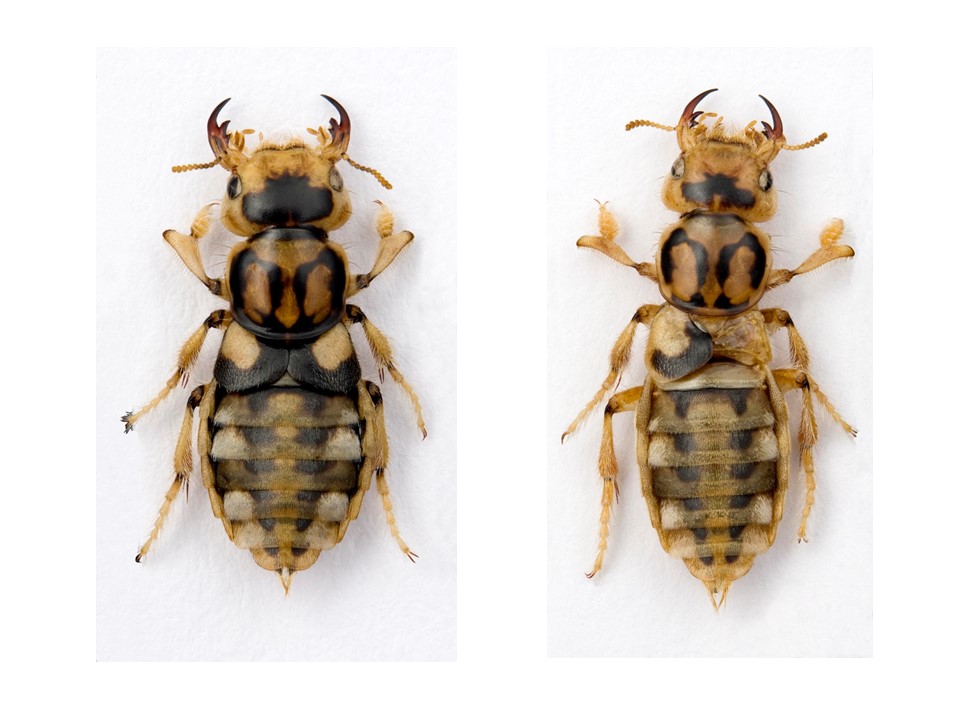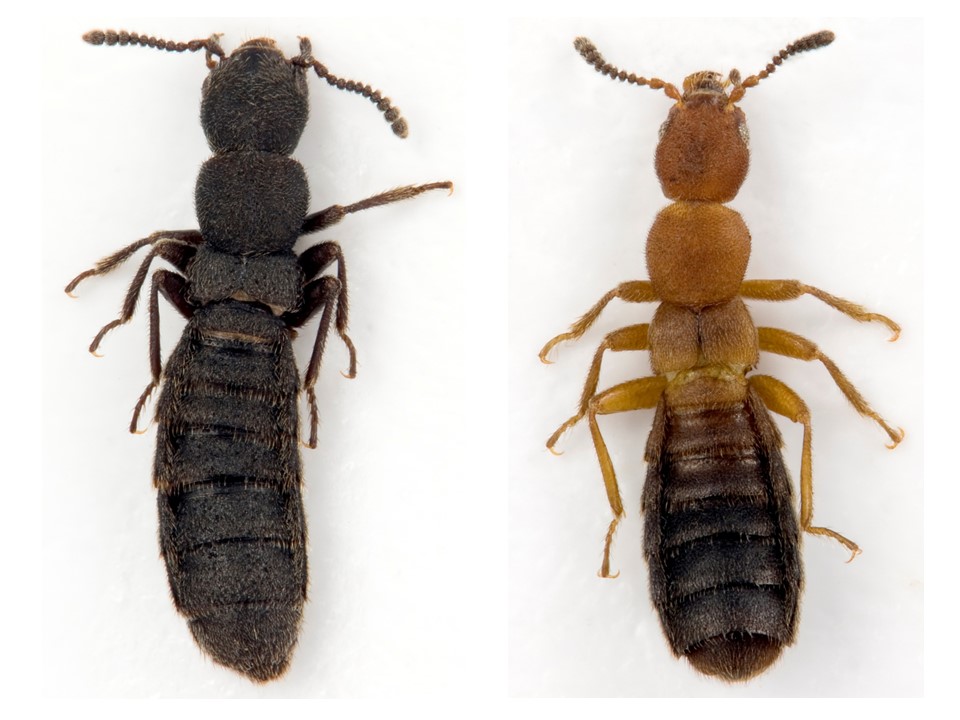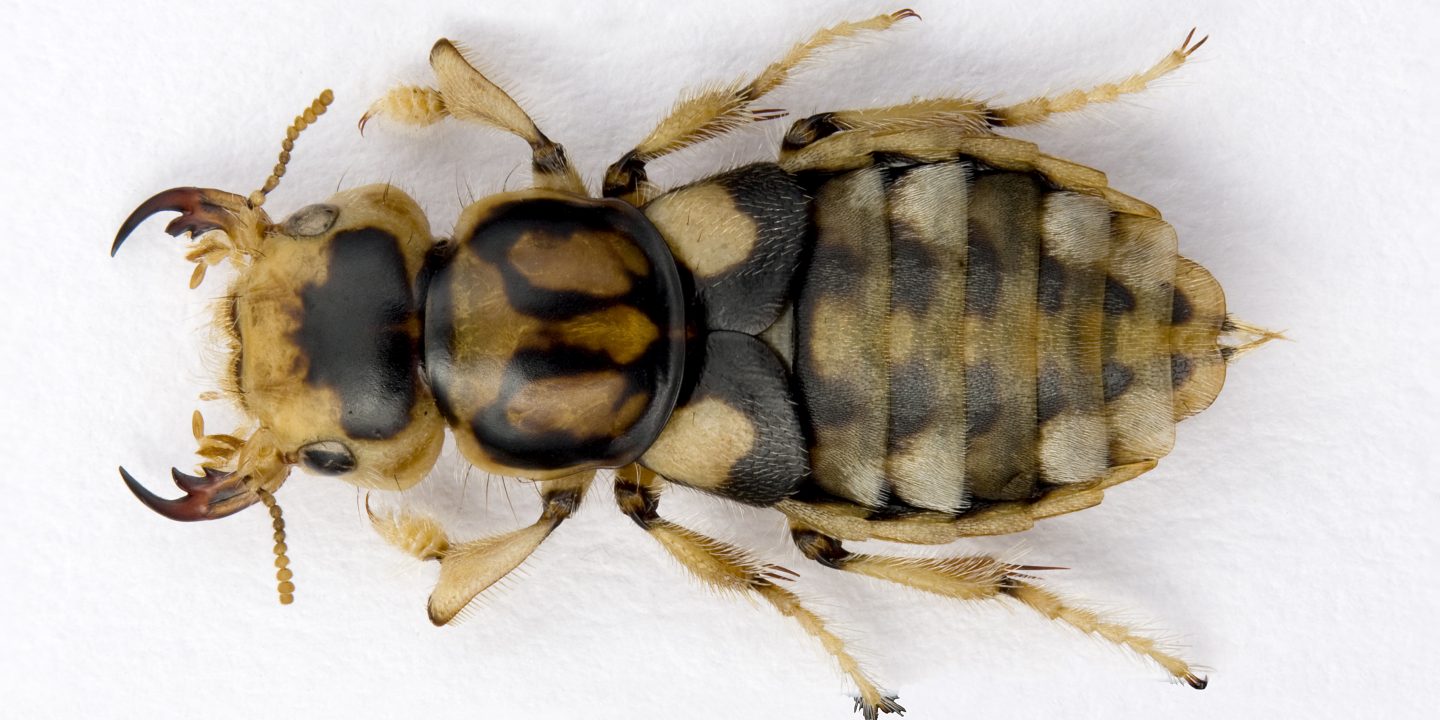Insects are not particularly diverse in the marine and coastal habitats. This contrasts strikingly with their dominance in most terrestrial ecosystems. Yet, certain insect groups have been quite successful in coastal environment, and one good example is the beetle family Staphylinidae. Diversity of the littoral and intertidal staphylinids is higher than that of any other beetle family. Different species specialized to particular microhabitats within the littoral zone.

The above photograph of the Southern Californian coast illustrated different microhabitats inhabited by different species of staphylinid beetles. These habitats range from piles of seaweed, to space under boulders, in between pebbles, gravel and sand particles, under driftwood to habitats submerged during high tides. While under water, beetles survive in pockets of air in rock crevices, empty barnacle shells and under submerged boulders. Depending on where beetles live they possess different adaptations.

The three species of the genus Cafius shown above are a typical example of predators inhabiting seaweed piles and feeding on numerous other arthropods, in particularly, fly larvae and crustaceans feeding on the decomposing algae. Several species may occur sympatrically and usually they differ in their body size. Presumably, they specialize on pray of different size. Seaweed piles are often a patchy resource and all species of Cafius have fully developed wings. This may also help to escape if the seaweed are flooded.

Larger predators are often active only at night. The photo above presents Thinopinus pictus, active on the sand beaches at night, while hiding under sand during the day. Note the powerful digging legs, lack of wings and disruptive coloration breaking the beetle body outline. The photo bellow illustrates a beetle hunting on the sand surface after sunset.


Genus Diaulota is an example of a highly specialized group inhabiting the tidal zone. These beetles are capable of surviving the high tide in the air pockets in empty barnacle shells and rock crevices.
Multiple lineages of staphylinids independently evolved to adapt to the littoral and intertidal habitats. At least 400 species have been recorded in these habitats worldwide and new species are being added continuously.
References
Frank, J. H. & Ahn, K.-J. (2011) Coastal Staphylinidae (Coleoptera): A worldwide checklist, biogeography and natural history. ZooKeys, 107: 1–98; doi: 10.3897/zookeys.107.1651
![]()
